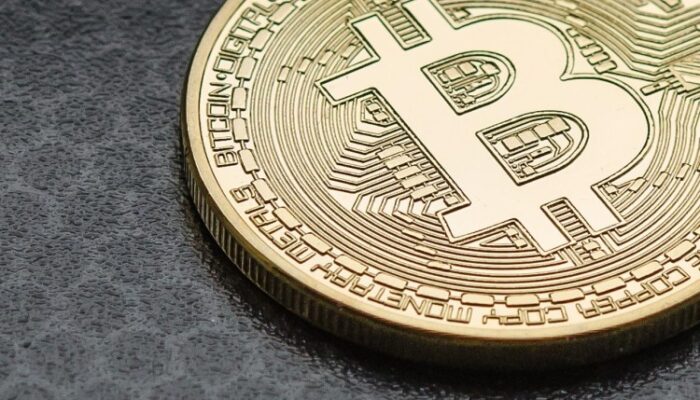Disclosure: The views and opinions expressed here belong solely to the author and do not represent the views and opinions of crypto.news’ editorial.
The United States’ biggest banks are afraid. Not of a financial crisis, not of cyberattacks, not of geopolitical shocks. They’re afraid of yield-bearing stablecoins paying customers interest.
Summary
- Banks fear yield-bearing stablecoins because they threaten around $200B in annual revenue from swipe fees and idle deposits, not because of real systemic risk.
- History shows banks are bad at predicting disruption — they made the same doom claims about money market funds, fintech apps, and online brokerages, and were proven wrong each time.
- Stablecoins don’t destabilize lending — customers already access higher-yield products, and banks can fund loans through wholesale markets even if deposits shift.
- The real risk is U.S. competitiveness — blocking stablecoin innovation will only push consumers to foreign issuers, leaving U.S. banks lagging while innovation and oversight move offshore.
That fear is why they fought tooth and nail to keep yield-bearing stablecoins out of the GENIUS Act, and why they’re now pushing regulators to stop platforms like Coinbase from offering rewards to stablecoin holders.
Wall Street claims that yield-bearing stablecoins will trigger deposit flight, which would destabilize lending and put the entire financial system at risk. It’s the same tired line we’ve heard countless times: when money market funds were introduced in the 1970s, when online brokerage accounts became mainstream in the 1990s, and when fintech apps emerged over the past decade. Each time, the banks were wrong.
What’s really at stake here is simply market share. Yield-bearing stablecoins threaten the banking industry’s $200 billion annual feast of swipe fees and near-zero-yield deposits. Instead of competing against newcomers, banks want regulators to slam the brakes and protect their business.
Why banks don’t like yield-bearing stablecoins
Strip away the rhetoric about consumer protection, and the real reason banks fear yield-bearing stablecoins becomes obvious: money. Every time a customer swipes a card, banks pocket a fee. Every time someone leaves idle cash in a low-yield checking account, banks profit by reinvesting that money at higher rates. Stablecoins threaten both of those income streams. The fight is about protecting $200 billion in annual bank revenues. These concerns are understandable, but lobbying to keep the playing field in the banking sector’s favor will end up making the U.S. less competitive in the long run.
The danger, after all, is that U.S. banks and regulators will stifle innovation and push it offshore. In a global financial system, consumers and investors are no longer limited to domestic products. If the U.S. prevents yield-bearing stablecoins from existing at home, customers will simply turn to foreign issuers.
That would be a lose-lose scenario: U.S. consumers would still access these products, but the innovation, tax base, and regulatory oversight would migrate abroad. Meanwhile, domestic banks would continue to lag, hiding behind regulatory capture instead of competing on product quality. We’ve already seen this scenario bear out to some degree with stablecoins that don’t offer any yield: Tether, a stablecoin firm headquartered in El Salvador, undeniably dominates the field to this day.
If the U.S. banks want to remain competitive, they need to stop lobbying against innovation. Nothing stops them from issuing their own stablecoins or partnering with fintech firms in order to do so. The only thing holding them back is inertia, and dare we say, a certain complacency.
Their arguments aren’t convincing
What about the banks’ claims that yield-bearing stablecoins threaten the stability of the financial system?
This argument is nonsensical for the simple reason that American customers already have access to high-yield financial instruments. Money market funds, treasury bills, and brokered deposits offer yields far higher than the average checking account. In fact, many banks themselves already give customers the ability to sweep idle cash into money market funds without ever leaving their app.
So the notion that stablecoins are somehow unleashing a dangerous new type of financial product is misleading, to say the least. Yield-bearing products already function within the broader financial system. The only difference is that stablecoins operate on blockchain rails, making them more accessible and more efficient than the legacy banking system.
Similarly, one of the favorite arguments from bank lobbyists is that stablecoins will drain deposits from banks, crippling their ability to lend. That verges on fear-mongering.
Banks do rely on deposits, but they also fund loans through wholesale markets: repos, commercial paper, and interbank lending. If some deposits shift into stablecoins, banks can easily tap these other sources of liquidity. The idea that a marginal decline in deposits equals a credit crunch is flat-out wrong.
History bears this out. For decades, money market funds, prepaid cards, brokerage sweep accounts, and fintech apps have diverted customer funds away from banks. Yet the lending market has remained robust. Stablecoins are just the newest competitor in a long line of innovations that nibble at deposits without breaking the system.
Banks are terrible at predicting how tech will impact finance
This isn’t the first time banks have made apocalyptic claims about new financial instruments. When money market funds were first introduced in the 1970s, banks warned of the impending collapse of traditional banking. Policymakers were told that allowing money market funds would unleash chaos on the financial system.
What actually happened? Deposits did flow out of banks, but the system adapted. Banks responded by introducing new products, adjusting their funding mix, and finding ways to compete. The financial system evolved.
The lesson from the 1970s is simple: innovations that pass yield to consumers don’t destroy banks; they push them to innovate. Yield-bearing stablecoins are just a 21st-century version of money market funds. They represent a new type of financial instrument that forces legacy players to modernize.
Banks need to quit whining and compete
At its heart, this debate is about the spirit of competition. Stablecoins are simply the latest in a long series of innovations (credit cards, online brokerage accounts, fintech apps, etc) that banks initially resisted but ultimately learned to coexist with. Each time, the predictions of doom proved false. Each time, the financial system adapted.
Yield-bearing stablecoins will be no different. They won’t collapse the banking system. They will challenge it. And in the long run, that’s a good thing.
Banks can continue to waste energy lobbying Congress and regulators to protect their turf. Or they can embrace the future, innovate, and actually compete for customers on merit. If they truly believe in the strength of American finance, the choice should be obvious.

Harbind Likhari
Harbind Likhari is the chief product officer of MNEE, a platform developing an incentive-driven stablecoin payments infrastructure for merchant applications.




